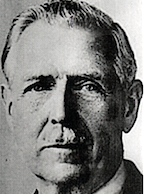
Gerald Wellesley [also known Gerald Wellesley Wellington, 7th Duke of Wellington] was born in London, England on 21 August 1885. He was articled to Harry Stuart Goodhart-Rendel (1887-1959) from 1919. He also attended the atelier of Fernand Billerey (1878-1951). Wellesley commenced independent practice as an architect in 1921 and in 1923 formed the partnership Lord Gerald Wellesley & Trenwith Wills [also known as Wellesley & Wills] with Trenwith Lovering Wills (1891-1972). The partnership was dissolved in 1943 when Wellesley became the 7th Duke of Wellington.
In 1936 Wellesley was appointed Surveyor of the King's Works of Art. From 1950 to 1957 he was a trustee of the National Gallery in London. He was elected a Fellow of the Royal Institute of British Architects (FRIBA) in 1936. He died in London on 4 January 1972.
Memorial to Lieut. Richard Lumley, Sandbeck Chapel, Yorks, 1920; Inverchapel Lodge, Loch Eck, Argyllshire, 1921. In partnership with Trenwith Wills, A.R.I.B.A. — Alterations and additions to Sherfield Court, Hants, 1922; additions to Inverchapel Lodge (see above), 1922; War memorial, Buckland, Berks, 1922; Goddard's Farm, Hants, 1923; alterations and additions, The Warren House, Stanmore, Middlesex, 1923. [Source: Who's Who in Architecture 1926]
______
See also Historic England [link below]
Directory of British Architects 1834-1914. Compiled by Antonia Brodie, et al. Volume 2: L-Z. London; New York: British Architectural Library, Royal Institute of British Architects/Continuum, 2001 [Listed under Wellington, Gerald Wellesley, 7th Duke of]
‘Obituary’. Building vol. 222, 14 January 1972 p. 88
Tinniswood, Adrian. Noble Ambitions. The Rise and Fall of the Post-War Country House. London: Vintage Digital, 2021.
Who's Who in Architecture 1926. Edited by Frederick Chatterton. London: Architectural Press, 1926